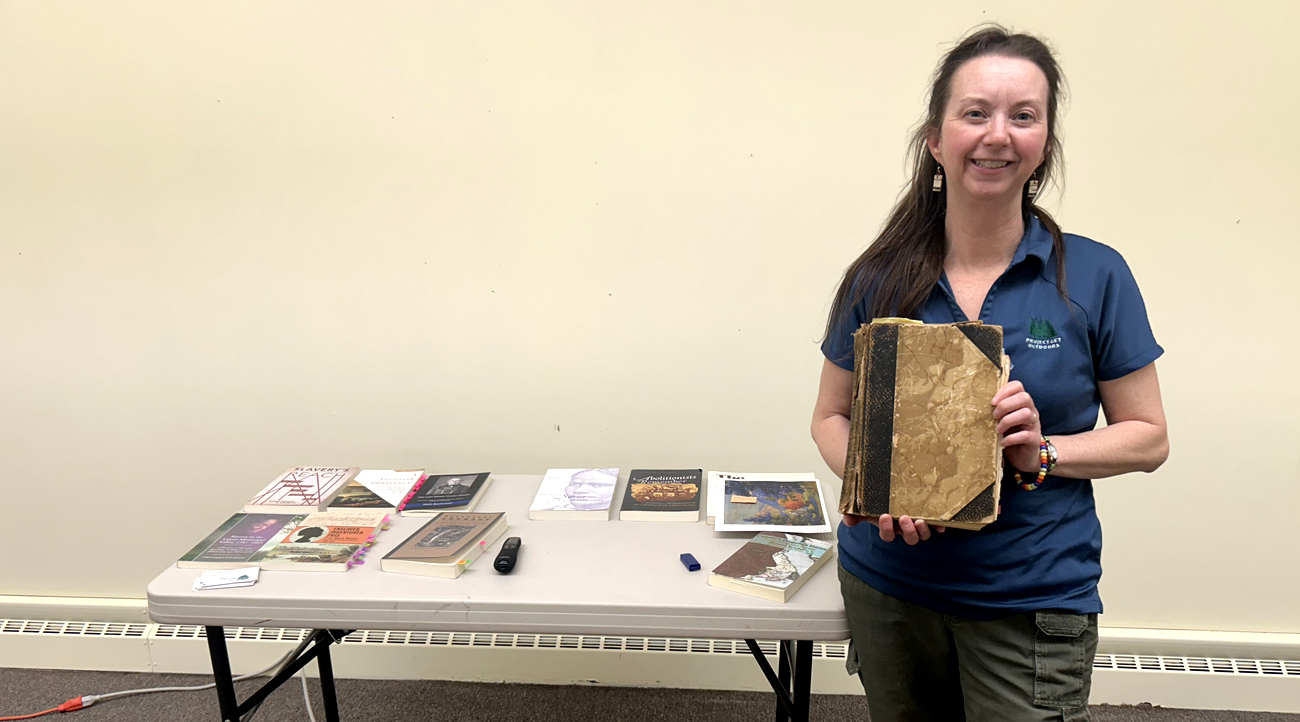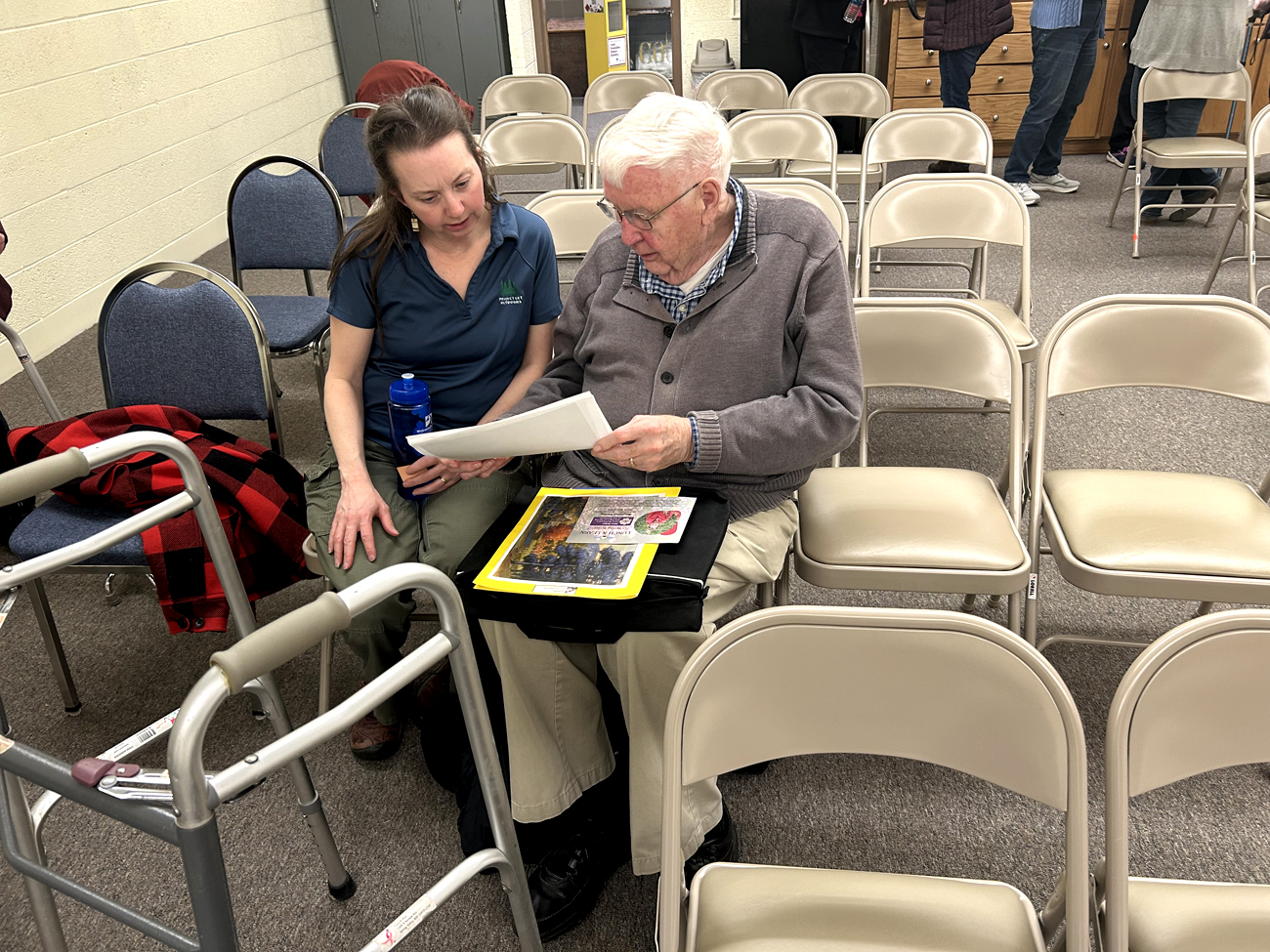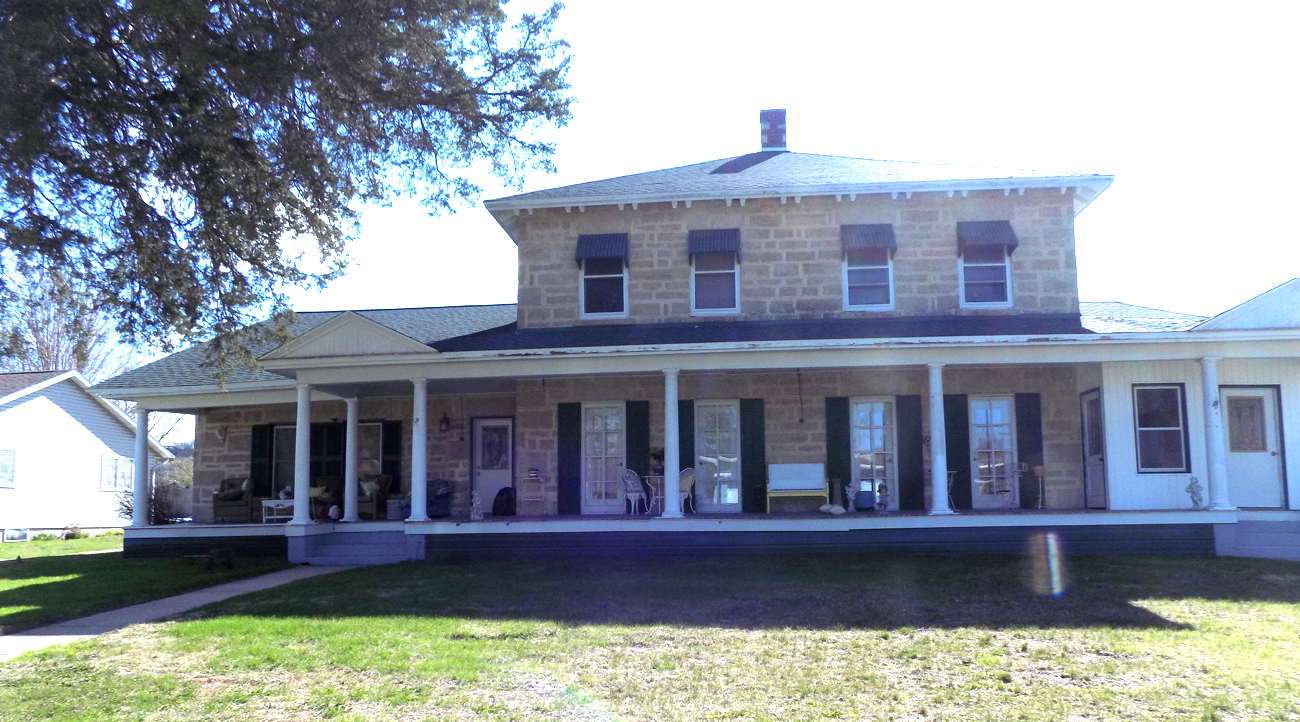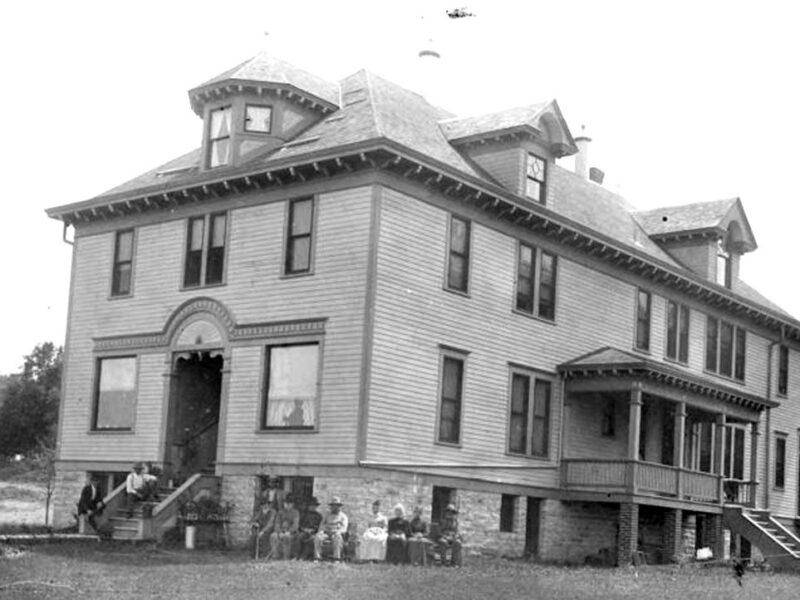The Rosewell Valentine House in Rushford was once the parsonage for the Lutheran Church and is believed to have been an Underground Railroad stop. (Photo by Sara Holger)
Discovered: The Underground Railroad In Southeast Minnesota And The Abolitionists Who Helped
SOUTHEAST MINNESOTA — Recent historical research has discovered that among the mass of immigrants who moved into Southeast Minnesota after the 1851 Treaty of Traverse des Sioux opened up thousands of acres of land for settlement, several were abolitionists who not only opposed slavery, but wanted it abolished completely — and actively helped enslaved Blacks gain their freedom.
These abolitionists did this by participating in the Underground Railroad, a vast system of safe buildings and routes across the country which ferried Freedom Seekers from the South to Northern states and into Canada, reaching its height in the decade before the Civil War.
Although its locations have been identified throughout Iowa, there are lingering questions about exactly where the Underground Railroad continued into Minnesota before reaching St. Paul.
Abolitionists of Southeast Minnesota Oral History Project
Sara Holger of Project Get Outdoors, Inc. secured a grant to research Southeast Minnesota abolitionists and their involvement with the Underground Railroad and conduct oral histories of their descendants and other researchers. Holger credits retired professor Dr. Carol Jefferson as a trailblazer in this area of study, helping her learn how to find, analyze, interpret and document historical sources and information.

Sara Holger with one of the research books used in studying the abolitionist movement in Southeast Minnesota. She spoke at the Fillmore County History Center in April. (Photo by John Torgrimson)
However, discovering information about this topic can prove challenging for researchers. Abolitionist views weren’t the most popular. And it was illegal to help enslaved people escape to freedom – the Fugitive Slave Act of 1850 imposed penalties on those who aided them, even in free states. Secrecy was a necessity to protect all those involved and few records were kept or survived.
“This research is super difficult because abolitionists during this time period were being threatened, beaten, murdered and imprisoned,” shared Holger, “so they were doing a lot of underground work…working behind the scenes within their networks.
“It takes time to learn how to read into the subtleness of clues and associations. You have to go into it with an open mind and some creativity as you begin searching,” she said.
Building off local legends and research completed by area historians, Holger followed the breadcrumbs. Clues indicating abolitionist activity included commonalities of religious and political affiliations, involvement in suffrage and temperance efforts, and having roots in Eastern communities with strong abolition leanings.

Sara Holger examines papers with Dr. Lowell Barr of Albert Lea, who attended the Abolitionists of Southeast Minnesota presentation at the Fillmore County History Center. (Photo by John Torgrimson)
Holger pulled together information from a variety of resources to create a more cohesive look at this unheralded historical chapter in Minnesota history.
Abolitionists in Every Southeast Minnesota County
Anti-slavery sentiment and abolition activism was prevalent in the Southeast Minnesota communities. “I would guess every single town in our region had abolitionists and/or anti-slavery supporters,” Holger said. “Each of these people has a very unique, personal story of how they became committed to the cause.”
In communities along the Mississippi River, abolitionists helped extend the Underground Railroad towards Canada.
Members of Winona’s Congregational Church held abolition views and were involved in social reform causes. Steamboat captains such as Captain Orrin Smith secretly transported Freedom Seekers to St. Paul, most notably on a ship called the Dr. Franklin.
From the Mississippi River, the Root River provided transportation of people and goods into and out of Houston and Fillmore counties. At the time, the river’s breadth and depth provided ample room for steamboats to travel inward several miles.
Among the first settlers to the Houston area was William McSpadden, an immigrant from New York State. Evidence suggests McSpadden was involved in the Underground Railroad, hiding fugitive slaves. And after serving in the Civil War, McSpadden brought home with him a young Black boy named Calvin Simmons. Simmons stayed with McSpadden throughout his life.

Joe Steinbauer, a Czech immigrant, recalls a number of black families that lived in the Hart area. (Photo courtesy of Steinbauer family)
Upriver in Rushford, two residences built by George Stevens and Roswell Valentine, have been identified as safe houses, with one having a secret room discovered after the 2007 flood. Stevens and Valentine most likely shared a Quaker background, an important indication of abolition tendencies because the religious sect was heavily involved in the Underground Railroad.
A rugged trail called Slave Road connected Rushford with nearby Hart. Hart was home to members of the Jeffery family, a multi-racial clan that settled in the area around 1856.
The Jeffrey family has a documented history with abolition views and activities. Some members were involved in the Beman Triangle, a Connecticut community where African Americans owned property. Family members also signed a petition to repeal the 1833 Canterbury Law, which made it legal for towns to decide if out-of-state African Americans could attend local schools.
Also, another family possibly involved in the Underground Railroad in Hart was the Steinbauer family. They were of Czech ancestry and a descendent, Joe Steinbauer, recalled that a number of Black families lived in the Hart area.

William Stork started an anti-slavery group in Harmony, which included After Hoag and Daniel Dayton, who owned Ravine House near Big Springs, a stagecoach stop on the road from St. Paul to Dubuque. (Photo courtesy of The English Storkes in America by C.A. Storke. Copyright 1936 by Louise Parrott Peck)
Between 1854 to 1861, many enslaved Blacks fled the Kansas Territory and escaped into Iowa, eventually crossing the border into Minnesota. Some continued to the Mississippi River to seek passage north while others may have journeyed across land.
During the winter months, rivers froze and halted boat traffic. So, communities along stagecoach routes also became active participants in the Underground Railroad.
In Harmony, William Stork started an anti-slavery group. He was not an abolitionist to begin with but experienced an epiphany before moving to the area from Wisconsin. Stork kept descriptive journals and of this life-changing moment, vowing to commit himself to the abolition of slavery.
Among the members of Stork’s anti-slavery group were After Hoag and Daniel Dayton, owner of the Ravine House in Big Springs, which was a stagecoach stop on the Dubuque-St. Paul Trail. Historical research has proven that fugitive slaves did use stagecoach routes to escape. Some were hidden in secret compartments of wagons. And stops like Ravine House were used to shelter them as they traveled. Dayton was also a postmaster, a profession shared by many abolitionists.
So, an intriguing question: Was Dayton involved in the Underground Railroad via the Dubuque-St. Paul Trail?
Additional Research Needed to Uncover More
While there are still many unanswered questions, Holger and other local researchers have provided a foundation for growth into a more comprehensive narrative about the abolitionists and their role in Southeast Minnesota’s Underground Railroad. They’ve scratched the surface of this important historic topic that deserves more spotlight and verification — surely there is more to discover and document for future generations.
…………………
For more information on this topic, the author suggests these resources:
Freedom Stories of Southeastern Minnesota (Facebook)
National Park Underground Railroad
Abolitionists of Southeast Minnesota Oral History Project
Rushford Area Historical Society
…………………

Contributor
Author Amy Jo Hahn’s historical work includes several published articles, an oral history project titled Voices of Harmony, various archival projects, research, and content contribution to PBS-station KSMQ’s “R Town” historical segment. She is the author of Lost Rochester (Arcadia Publishing, 2017). Hahn holds a BA and an MA in mass communication, and a certificate in historic preservation. Her hometown is Harmony; she resides in Rochester.




